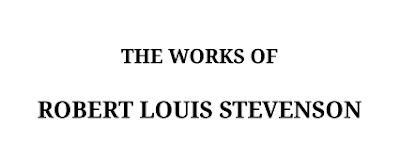THE WORKS OF
ROBERT LOUIS STEVENSON
SWANSTON EDITION
VOLUME 4
(eText)
CONTENTS
NEW ARABIAN NIGHTS
THE SUICIDE CLUB
Story of the Young Man with the Cream Tarts 5
The Story of the Physician and the Saratoga Trunk 37
The Adventure of the Hansom Cabs 65
THE RAJAH’S DIAMOND
Story of the Bandbox 86
Story of the Young Man in Holy Orders 111
The Story of the House with the Green Blinds 127
The Adventure of Prince Florizel and a Detective 159
THE PAVILION ON THE LINKS
CHAPTER
I. Tells how I Camped in Graden Sea-wood, and beheld a Light in the Pavilion 167
II. Tells of the Nocturnal Landing from the Yacht 174
III. Tells how I became Acquainted with my Wife 180
IV. Tells in what a Startling Manner I learned that I was not Alone in Graden Sea-wood 189
V. Tells of an Interview between Northmour, Clara, and Myself 197
VI. Tells of my Introduction to the Tall Man 202
VII. Tells how a Word was cried through the Pavilion Window 208
VIII. Tells the Last of the Tall Man 214
IX. Tells how Northmour carried out his Threat 221
A LODGING FOR THE NIGHT 227
THE SIRE DE MALÉTROIT’S DOOR 250
PROVIDENCE AND THE GUITAR 273
The PDF might take a minute to load. Or, click to download PDF.
If your Web browser is not configured to display PDF files. No worries, just click here to download the PDF file.
About the Author
Robert Louis Stevenson (born Robert Lewis Balfour Stevenson; 13 November 1850 – 3 December 1894) was a Scottish novelist, essayist, poet and travel writer. He is best known for works such as Treasure Island, Strange Case of Dr Jekyll and Mr Hyde, Kidnapped and A Child's Garden of Verses. Wikipedia
Robert Louis Stevenson at Amazon




No comments:
Post a Comment